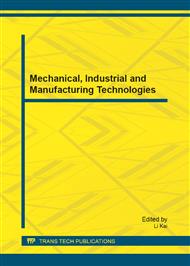p.134
p.138
p.146
p.151
p.157
p.161
p.165
p.173
p.177
Experimental Study on Bending Capacity of Plain Wall System
Abstract:
Plain wall system is highly suitable to be used with reinforced concrete as its building material. Concrete vertical walls may serve both architecturally partitions and structurally to carry gravity and lateral loading. Moment transfer of joint is an important aspect for proper structurally functioning of plain wall system. Hence, the aim of this study is to investigate experimentally the effect of reinforcement details in the wall on bending capacity for support stiffness in plain wall system in Malaysia. A total of six wall specimens were tested. Three of this specimens consisted single layer of rebar while another three specimen consisted of double layer of rebar. The size of the plain wall’s specimens is 1000mm in length, 1080mm in width, 1000mm in height and 80mm in thickness. The average concrete strength was 23.49MPa with Grade 30N/mm2 and the average yield strength of R5 bar was 817MPa. The bending capacity at failure for single layered of rebar in wall for specimen 1, 2 and 3 were found to be 3.59kNm, 3.81kNm and 3.15kNm, respectively. The bending capacity at failure for double layered of rebar in wall for specimen 1, 2 and 3 were 5.50kNm, 6.31kNm and 7.00kNm, respectively. Based on the results, specimens consisted of double layered of rebar in wall is found to provide higher bending capacity to the joint of plain wall system in the range from 56.25% to 98.86% compared with single layered of rebar in wall.
Info:
Periodical:
Pages:
157-160
Citation:
Online since:
June 2012
Authors:
Price:
Сopyright:
© 2012 Trans Tech Publications Ltd. All Rights Reserved
Share:
Citation:


